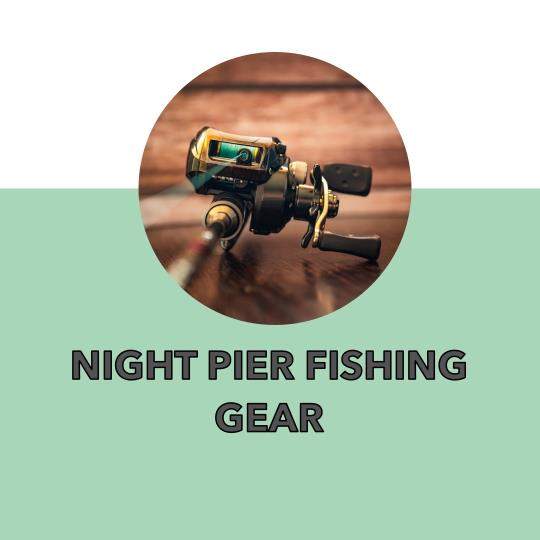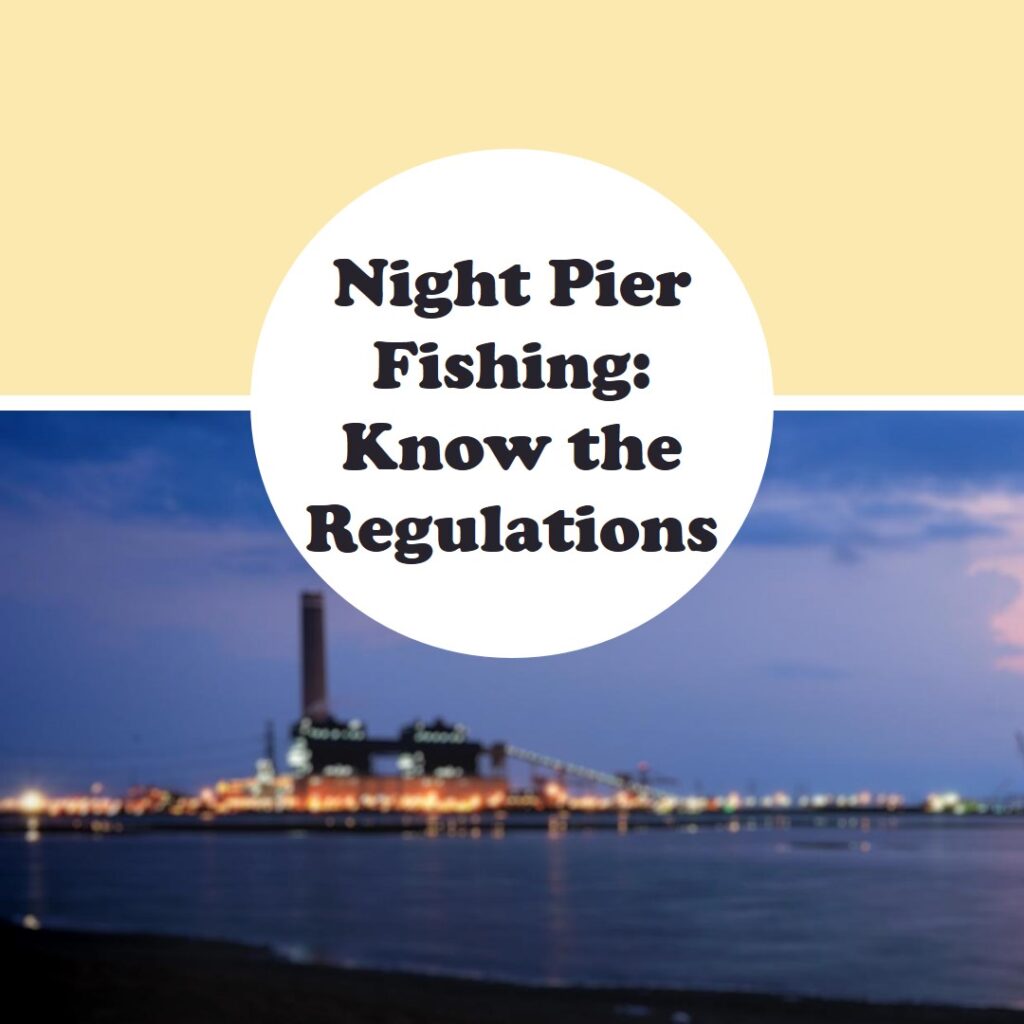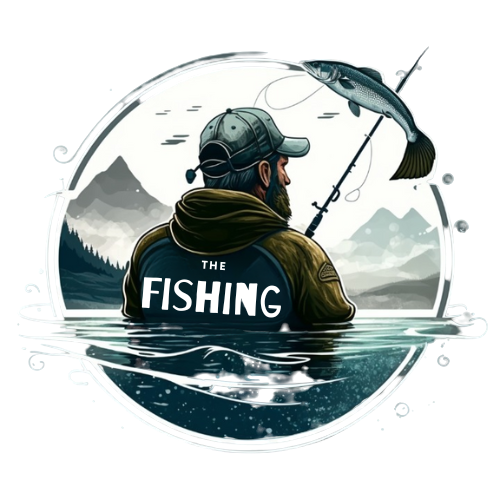
To pier fish at night, choose the right location and gear, use attractants, and adjust your fishing techniques for low light conditions. Night fishing from a pier can be an exhilarating and rewarding experience, providing a unique opportunity to catch a variety of species that are more active during the dark hours.
In this guide, I will cover the essential tips and techniques to help you make the most of your night pier fishing adventures.
From selecting the right location and gear to using attractants and adapting your fishing techniques for low light conditions, I’ve got you covered.
So, read on and get ready to reel in some impressive catches during your next nocturnal fishing session.
Table of Contents
Basic Night Pier Fishing Gear

When pier fishing at night, having the right gear is essential. It starts with choosing the appropriate fishing rod and reel, ensuring they are suitable for nighttime fishing conditions.
You may need: 10 Best Pier Fishing Rod (2023 Buyer’s Guide)
For night pier fishing, selecting the right fishing line and hooks is crucial, as visibility is limited.
Opting for lines that are highly visible in low light conditions is recommended, along with hooks suitable for the targeted fish species.
Additionally, there are some must-have accessories for night pier fishing.
Bringing along a headlamp or flashlight is vital for visibility and ensuring safe navigation on the pier.
You can check this guide: Top 10 Best Rechargeable Headlamps for Fishing
Carrying a tackle box with various lures, baits, and weights is also important to have options for different fishing scenarios.
By having the right gear, night pier fishing can be both enjoyable and successful.
Challenges of Night Pier Fishing
- Feeling the Bite: It’s difficult to feel the bite because of the arc in the line.
- Hooking the Bait Properly: Ensuring the bait is hooked through some kind of skin is crucial. If hooked only through the flesh, the bait tends to fly off.
- Environmental Factors: The windy conditions like the Gulf of Mexico can make the fishing experience more challenging.
Best Practices For Night Pier Fishing

Here’s my comprehensive guide on the best practices for night pier fishing:
1. Safety First
- Lighting: Always ensure you have adequate lighting. I personally recommend LED headlamps as they keep your hands free and focus the light where you’re looking. Also, consider carrying a handheld torch for backup.
- Footwear: The pier can get slippery at night due to dew or splashes. Wear shoes with a good grip to prevent any accidents.
- Inform Someone: Always let someone know where you’re going and when you expect to be back. It’s a simple safety measure that can make all the difference.
2. Gear Up
- Reflective Gear: I’ve found that using reflective tape on my fishing rod and tackle box makes it easier to locate them in low light.
- Glow Sticks: Attach a small glow stick or a lighted bobber to your line. It helps in detecting bites in the dark.
- Bait: Live bait like shrimp or squid tends to work best for me at night. Their natural movement attracts fish more effectively in the dark.
3. Tackling the Challenges
- Feeling the Bite: As I’ve experienced, the arc in the line at night can make it hard to feel the bite. To counter this, I keep my line tight and pay close attention to the movement of the glow stick or bobber.
- Hooking: I’ve lost count of the number of times my bait flew off because I didn’t hook it properly. Always hook through the skin or a tough part of the bait to ensure it stays on.
4. Respect the Environment
- Wildlife: Remember, the night belongs to more than just the fish. I’ve encountered pelicans and other creatures. Always be respectful and avoid disturbing them.
- Clean Up: Leave no trace behind. I always carry a trash bag with me to ensure I pack out everything I brought in.
5. Embrace the Experience
- Patience: Night fishing requires patience. Sometimes, the catch might be a big flounder, and other times, it might just be the peace of the night. Embrace both.
- Learn from Each Trip: Every trip teaches something new. Maybe it’s a new spot on the pier or a new baiting technique. Always be open to learning.
Here is a video guide on oier fishing at night:
Night Pier Fishing: Fishing For Specific Species
Night pier fishing is not just about casting your line and hoping for the best.
Different species of fish have distinct habits and preferences, and understanding these can significantly increase your chances of a successful catch.

Here’s a guide to fishing for specific species during nighttime pier fishing, complete with some numerical data to give you a clearer picture.
1. Flounder
- Best Time: Flounder are most active during the hours just after sunset and just before sunrise.
- Bait Preference: Live minnows, squid, or shrimp.
- Depth: Typically found between 5 to 30 feet.
- Tip: Flounder often lie on the seabed, so a bottom rig works best.
- Catch Rate: On a good night, you might catch 3-5 flounders per hour.
2. Mackerel
- Best Time: Late evening to midnight.
- Bait Preference: Small shiny lures or strips of squid.
- Depth: They often swim closer to the surface, between 5 to 15 feet.
- Tip: Fast retrieval of the line can attract mackerel as they’re attracted to moving objects.
- Catch Rate: With the right technique, expect 2-4 mackerels per hour.
3. Snook
- Best Time: They’re most active during the first few hours after sunset.
- Bait Preference: Live shrimp, pinfish, or sardines.
- Depth: Typically found between 10 to 40 feet.
- Tip: Snook are ambush predators, so casting near pier pilings can be effective.
- Catch Rate: Snook can be elusive, so 1-2 per hour is considered good.
4. Tarpon
- Best Time: Midnight to early morning.
- Bait Preference: Large live baits like mullet or pinfish.
- Depth: They can be found at varying depths but usually between 15 to 60 feet.
- Tip: Tarpon often hunt in schools, so if you catch one, there are likely more nearby.
- Catch Rate: Tarpon are a challenging catch, so 1 every couple of hours is a good rate.
5. Stingrays and Skates
- Best Time: Throughout the night, but especially late evening.
- Bait Preference: Squid or cut bait.
- Depth: Close to the seabed, usually between 10 to 50 feet.
- Tip: Use a heavy sinker to ensure your bait stays at the bottom.
- Catch Rate: These are more common, and you might catch 2-3 per hour.
Night Pier Fishing: Local Regulations And Licensing

Night pier fishing often requires adherence to local regulations and licensing.
You may like to know: Does Pier Fishing Require License? (4 Questions Answered!)
Before heading out, make sure to:
- Obtain a Fishing License: Some regions require anglers to have a valid fishing license. Check with local authorities or fishing agencies to purchase one.
- Understand Size and Bag Limits: Different fish species have specific size and quantity limits. Overfishing or catching undersized fish can lead to penalties.
- Follow Time Restrictions: Some piers may have restrictions on fishing hours. Ensure you’re fishing within allowed times.
- Respect Closed Seasons: Some species may have a closed season to protect their breeding periods. Avoid fishing for these species during such times.
FAQs Of How To Pier Fish At Night:
Can You Pier Fish At Night?
Yes, pier fishing at night can be a rewarding experience. Many fish species are more active after sunset, and the lack of boat traffic can make it easier to catch them. Just make sure to bring proper lighting, use glowing lures or bait, and be mindful of safety precautions while fishing in the dark.
What Equipment Do I Need For Pier Fishing At Night?
For night pier fishing, you’ll need a fishing rod and reel suitable for your target species, fishing line, hooks, sinkers, and a tackle box. Additionally, bring a headlamp or flashlight for visibility, glow stick indicators for bite detection, and a cooler to keep your catch fresh.
Don’t forget insect repellent and warm clothing if needed.
Is A Fishing License Required For Pier Fishing At Night?
Fishing regulations vary by location, so it’s essential to check with your local authorities. In many areas, a fishing license is required for pier fishing, regardless of the time of day. To avoid potential fines, make sure to obtain the necessary permits and follow all fishing regulations in your area before embarking on a night pier fishing adventure.
What Are The Best Fish To Catch While Pier Fishing At Night?
While the types of fish you can catch while pier fishing at night depend on your location, popular species often include snook, redfish, trout, flounder, snapper, and sheepshead. These fish are nocturnal feeders and are more active after sunset. Consult with local anglers or bait shops to discover the best night-time fishing opportunities in your area.
Are There Any Safety Precautions I Should Take While Pier Fishing At Night?
When night pier fishing, safety should be a top priority. Ensure you have proper lighting, maintain a safe distance from the edge of the pier, and never fish alone. Watch your surroundings and be aware of other anglers. If fishing on a public pier, familiarize yourself with any posted rules or restrictions.
Finally, always bring a first aid kit in case of accidents or emergencies.
Conclusion
Pier fishing at night can be an exhilarating experience filled with adventure and the opportunity to catch some impressive fish.
If you follow the right techniques, being prepared, and using the appropriate gear, you can significantly increase your chances of success.
Remember to research the best fishing spots, familiarize yourself with local regulations, and pack essential items like a headlamp, extra bait, and a tackle box.
Furthermore, maintaining silence, being patient, and paying attention to the tides and moon phases can make a significant difference in your fishing endeavors.
